Vocab
Palace Belt - 宫绦, gōng tāo, is an accessory worn around the waist to prevent dresses from flowing in the wind. It is commonly paired with hanfu for a simplistic look and referred to as such in modern times.
Silk Belt - 丝绦, sī tāo. An accessory that ancient Chinese people used to refer to. However, it was not only used as a fashion accessory but also on fans or flutes.
Zhiduo - 直裰, zhídāo. A traditional Chinese robe worn by scholars and officials during the Ming and Qing dynasties. It has a straight-cut Mandarin collar without openings and is a formal attire reserved for special occasions. It is worn over long shirts and wide trousers.
Tassels - 流苏, liúsū. In ancient China it had different names, such as 穗子 (suìzi), 缨旒 (yīng liú), and 流苏 (liúsū). Nowadays, 流苏 (liúsū) is the most commonly used name for tassels.
Silk ribbon- 绶, shòu - the ribbon with a jade or officials seals at the end.
History of Gong Tao
The Palace Belt, known as 宫绦 (gōng tāo), is an accessory that dates back to the Warring States Period. It is a long woven rope with tassels attached on both ends. Depending on the time period, such as before and during the Pre-Qing period, additional features may be added, such as beads and pendants. Hanfu in China's history has undergone long periods of changes and stagnation, so the designs and purposes of the palace belt have also evolved. Despite the differences, the common features are the woven rope and tassels on both ends, used as accessories for garments or objects.
If you’re referring to the palace belt from Pre-Qing onward, the usage and name palace belt are what people are similar with nowadays. It is typically made up of three parts; the weaved rope, tassel ends, and pendants or other heavier objects attached between the end of the rope and tassels. The usage of it will be to be worn over hanfu at the waist serving as a belt.
Since ancient times, clothing has been an important aspect of Chinese culture. Just like today, there are clothings that are worn based on situations. This was especially important for people of status and scholars involved in politics. Formal clothing will be worn on ceremonies, meetings, and rituals based on their dynastic outfit system. During formal events in the Dynastic periods, bureaucrat scholar will follow a "峨冠博带 (é guān bó dài)" rule, which means to wears a tall hat with formal attire that is paired with a wide belt. Besides those occasions, casual clothing can be worn without heavy accessories attached. Palace belt in this situations is a belt worn over casual outfits, so you can say that palace belt is a must-have for ancient Chinese to keep in their home, unless they are only wearing formal attire all year long.
Since it is worn with daily outfits, it cannot be compared with accessories such as gold, silver, and jade, which clearly presents the wearer’s identity and status. But there are still differences between a maid and a maiden from a wealthy family on how they wear the sash and how many complex accessories are added on it. What it does show is the complex and exquisite (复杂精美) craftsmanship level of the person who made it. In ancient China, a palace belt was not something that can easily be bought from stores like how people buy food from stalls. It is however, a small plaything made by females in their boudoir as pastime, just like embroideries learned at a young age for all female. By looking at the palace belt and knot arts on it, people will then be able to tell if the female that made it have high weaving skills.
There is even the phrase "碧玉妆成一树高,万条垂下绿丝绦 (bìyù zhuāng chéngyī shù gāo, wàn tiáo chuíxià lǜ sī tāo)," describing how the aquamarine colors of the wicker is similar to the silk sash on a beauty’s waist fluttering merrily in the wind, and arousing the heart of the people who sees it.
Palace belts can be worn by both males and females, although depending on the dynasty, they may have been more popular with one gender. Moreover, like sachets, palace belts could also be given as a token of affection to the opposite sex. Females who made palace belts could use them themselves or give them to males as a gesture of affection.
Palace belt is not just limited to the commoners, but also popular amongst scholars and doctors. During the Ming Dynasty, scholars will wear 直裰 (zhíduō), a type of long top paired with palace belt that is either hooked with jade or tied at the front center of the garment. During the summer, it will be paired with thin robe and will flow with the wind, giving the wearer a demeanor of transcendent being.
To summarize, the palace belt that we know of after the Pre Qin period include pendants or other heavier objects attached. It is something that is worn with casual outfits by ancient people. Young female learning embroidered skills make it as palything during their freetime and can be used personally or gifted to the opposite sex as indirect sign of affections. And lastly, the heavy object belt will droop from the waist and be pressed down on the dress to prevent all of the dress from fluttering with the wind.
Materials of Gong Tao
In general, palace belt is a simple accessory worn over outfits, but on the end of the weaved rope, each person can add certain accessories based on their preferences. Some would just have a tassels and some would preferred to add heavier objects to pressed down on clothes such as jade pendant, gold jewelry, bone carvings, or Chinese knots. Besides decorating with different small accessories, they can also have intricate embroideries woven on it using various colored silk threads.
While palace belt is primarily associated with court ladies, men and scholars can also wear it. Palace belt and 宫縚 (gōng tāo) differences are just the former being made of weaved rope and the latter made of silk fabric. It not only serve decorative purposes, but also hold the layers of garment together when worn over skirts 裳 (shang) and ruqun 襦裙 (rú qún). The sash made of intricate silks used by court ladies are called 宫縚 instead. As to whether these two objects are exactly the same and simply called differently based on the type of people using it or they might have slight differences I do not know. But one thing we can be sure of is that both objects serve similar purposes in ancient China.
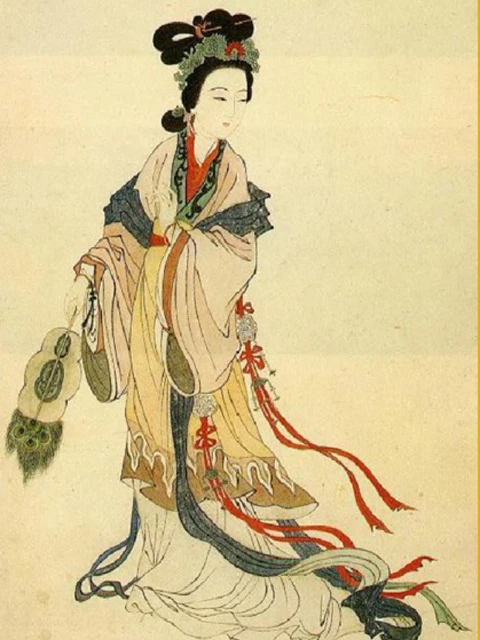
With Many Accessories Attached
The Difference between Gong Tao & Si Tao
The purpose and meaning of gongtao known in ancient times are widely different compared to now. Here is a few poetries pointed out the difference between Gong Tao (宫绦, gōng tāo) and Si Tao (丝绦, sī tāo).
Tang Dynasty, He Zhizhang "Yong Liu": "Seen from afar, the branches look full of hanging jade stones. The willow branches dangle like green ribbons. The budding willow leaves are slim, like they were cut by someone – but whom? It was a spring breeze in the second month that, like scissors, cuts out the tender leaves."
唐·贺知章 《咏柳》:
碧玉妆成一树高,万条垂下绿丝绦。
不知细叶谁裁出,二月春风似剪刀。
杨花烂漫胡杨树,春江水暖鸭先知。
蒌蒿满地芦芽短,正是河豚欲上时。
In the Tang Dynasty poem, silk belt is used to describe the leaves of a tall willow tree, which are dressed in a jade-green sheen. As the leaves droop down from the branches and sway with the wind, they resemble a thousand silk ribbons flowing in midair.
Ming Dynasty "Peach Blossom Spring": "In the high tower, a beauty plays a jade flute, by the side of the flute, a phoenix thread hangs a silk ribbon. The silk ribbon is exquisite, fragrant like the Buddha's hand, in her hand, a fan looks out to the river tides."
明代《桃花冷落》
高阁佳人吹玉笛,笛边鸾线挂丝绦。
绦丝玲珑香佛手,手中有扇望河潮。
Here, silk sash is a tassel attached to the end of the flute. It is still an accessory but not for outfits.
Qing Dynasty, Kong Shangren’s "The Peony Pavilion": "The immortal Cao knelt down and asked the Emperor Liexuan to come down and see him. He left behind the old trees of Meishan and untied his palace ribbon."
清·孔尚任《桃花扇·入道》
列仙曹,叩请烈皇下碧宵,捨煤山古树,解却宫绦。
The palace belt here refers to the belt tied around the waist to secure clothes.
Cao Xueqin, "Dream of the Red Chamber": "Xiangyun had tied around her waist a five-colored palace ribbon with a butterfly knot and long tassels.:
《红楼梦》第四九回: "湘云腰里紧紧束着一条蝴蝶结子长穗五色丝绦"
Here silk sash serves in place of palace belt worn by women of high status by the waist. There are decorative knots and tassels on the sash, which was a popular design in the Qing Dynasty.
Book of Rites: "The cap and robes of a nobleman are adorned with jade and silk ribbons."
《礼记》: 卿大夫冕服冠,佩玉丝绦,袂有繁绣,右袂以执壶,左袂以执觚。
Here, silk sash is an accessories that is used to adorn the caps and robes or nobleman. The cap here is adorned with jade and hanging silk ribbon.
Based on the citations, it seems that silk belt and palace belt can be interchangeable at times, but not always. Sometimes, silk sash is used to describe a small tassel hanging on an object, while at other times it refers to a belt tied around the waist. On the other hand, palace belt specifically refers to a type of belt tied around the waist.
It's interesting to note that poems from the past century make references to the existence of the palace belt or its predecessors. However, depending on the time period of the poem, the belt may be referred to as a "silk belt" or "silk sash" instead of a palace belt. This is because the palace belt underwent significant changes and updates over time, resulting in its current design. It's important to distinguish between the silk sash and palace belt as they are two distinct accessories.
To summarize, you can consider silk sash as a simpler, earlier version of palace belt. There are no tassels, pendants, or other heavy objects attached to it, and it is popular among males, although some females may also wear it. On the other hand, palace belt has more decorations and embroideries on it, and even though it is associated with court ladies, both men and women can wear it. There are different styles unique to each individual based on what they want to add or the type of knots they tie on it.
Understanding "绦 (tāo)" Itself
The character "绦 (tāo)" has multiple meanings and is a general term for various woven items. Since ancient China, one character can be used in context with other characters to form various meanings. The original meaning of "绦" is a ribbon or rope woven with silk. According to the source, "绦" refers not only to the thin rope mentioned in the Ming Dynasty's《三才图会》(sāncái tú huì), but also to a fabric woven waist rope or belt.
Comparing descriptions of silk sashes in《三才图会》with unearthed artifacts, silk sashes and palace belts are quite similar. "绦" in its simplest form is a long strip of cloth or woven rope tied around the waist with a knot. It was used by people of all social classes and could have various vibrant colors to match the wearer’s outfits. The main function of the "绦" was to secure and support the wearer's clothing, with appearance being a lesser concern.
The palace belt evolved from the word "绦" and is also known as "宫縚." It specifically refers to the silk sash made in the palace or imitated from palace products, representing the beauty and ceremonial properties of the silk sash from within the palace. The materials and designs of the palace belt varied depending on the wearer's status, with those of higher status having better materials and designs than those of lower status. The palace belt worn by court ladies can also be called "裙带 (qúndài)," meaning "dress band/belt." Another type of palace belt, called "绶 (shòu)," meaning "ribbon," extended from the first type and had dropping objects attached to the side, such as pendants or officials' seals. The colors of the silk ribbon represented different identities and grades.

With Multiple Knots
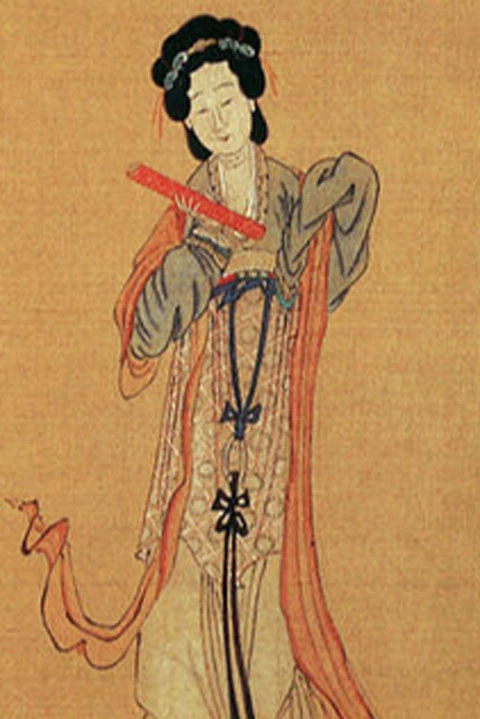
With Jade Pendant Loop; From Ming Dynasty scroll painting "明人畫千秋絕豔圖"
Referenced: 白茶国风KJ山雪 on Bilibili
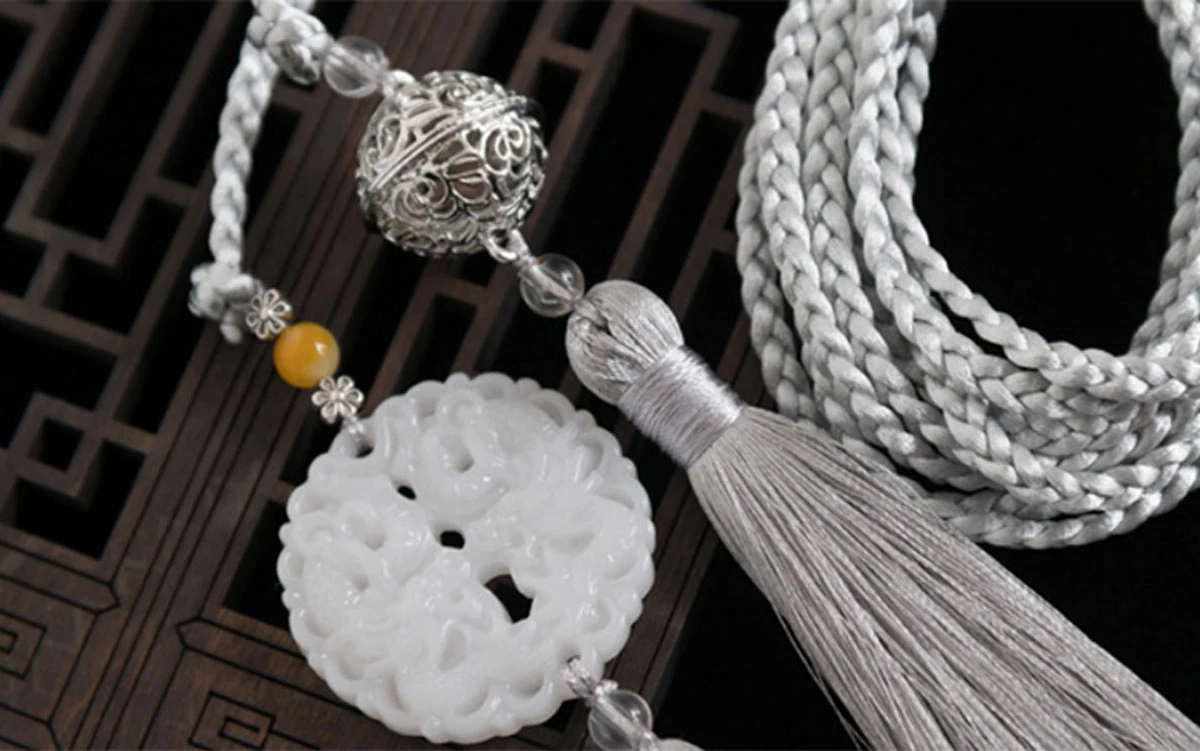
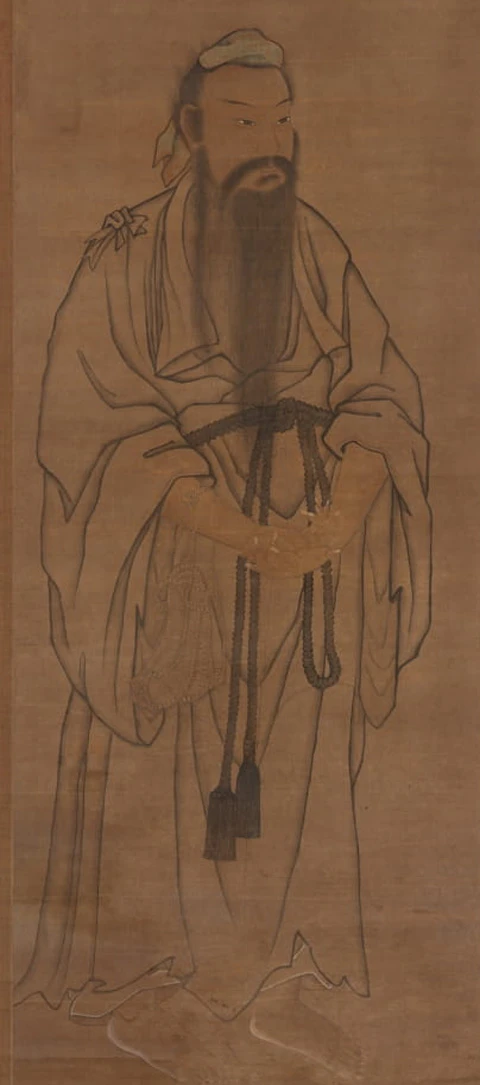
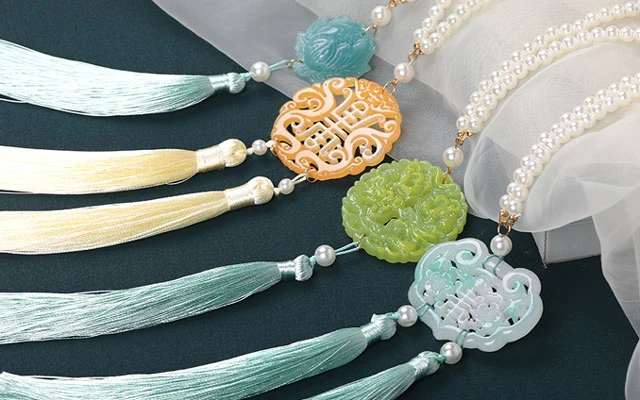
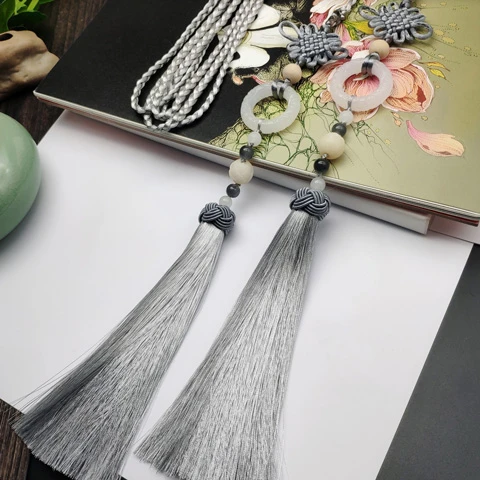
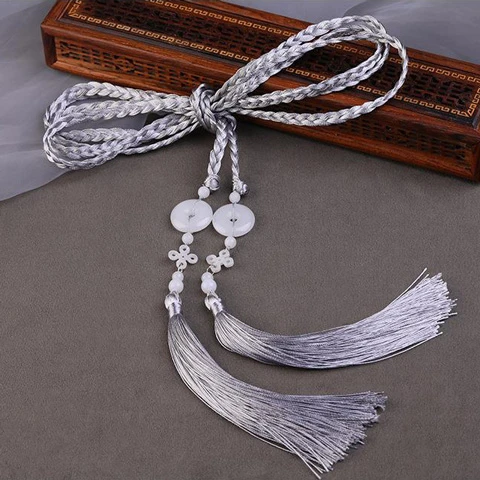
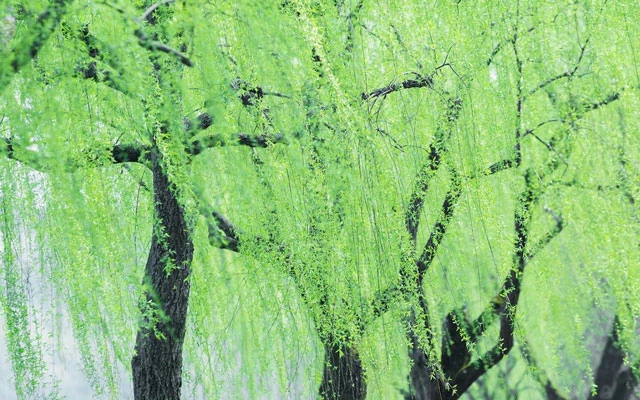
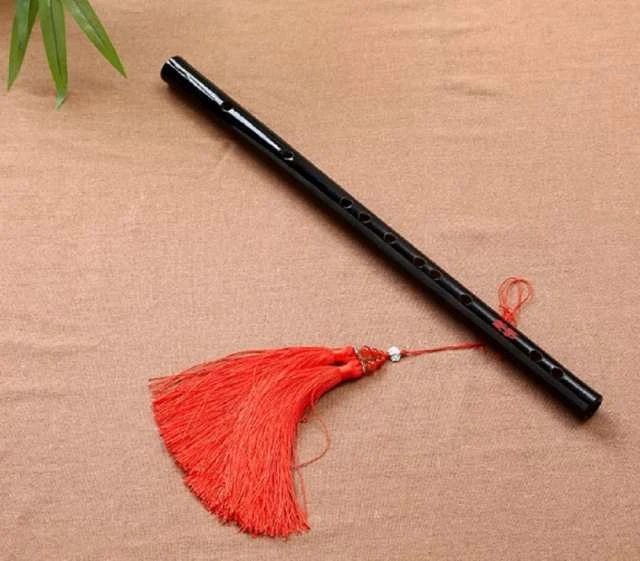
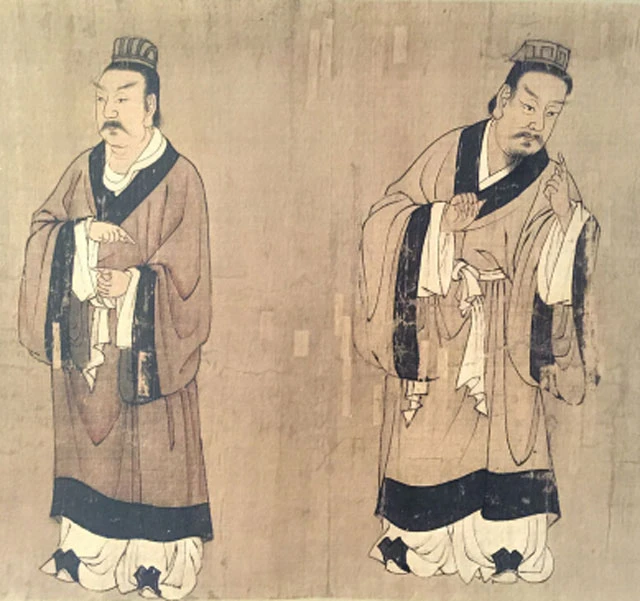

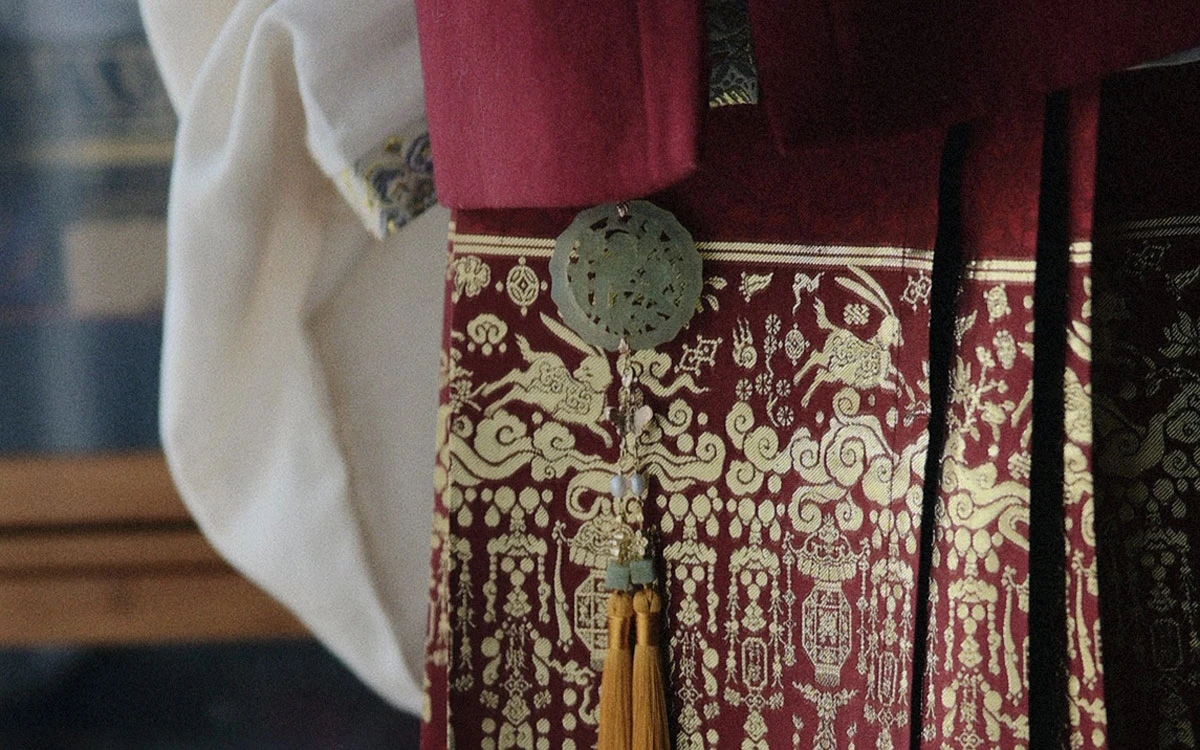

Wonderful post, thank you! 🙂
Really cool and informative post, thanks!
Very unique
wow, it must be quite expensive in ancient times
The first image is very interesting because the details seem to indicate that the illustrated palace belt is braided. It looks to be at least 2-3 times the length of an obi belt (mentioned only because obi kumihimo is a thing and kumihimo silk is sold in packages cut to length for an obi belt braid) The modern photo (grey) is clearly a 3 strand pig tail braid. The various illustrations with ladies in them look like their belts are silk fabric/ribbon viz lovely flowing ends, particularly "With Many Accessories Attached" but for the bows (ears) of the knots to not droop... starch?
I guess it depend on the material made to it. Female from richer family might use soft silk so if they in knot it will have a droopy effect. If it’s linen or other material it might be stiffer.